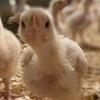Explore all the information on
Antimicrobials in poultry
Antimicrobial agents are essential tools for treating and controlling bacterial infections in poultry production. Veterinarians have a huge responsibility when using antimicrobials in poultry producing meat and eggs for human consumption. The term ‘judicious use’ of antimicrobials implies the optimal selection of drug, dose and duration of antimicrobial treatment, along with a reduction in inappropriate and excessive use as a means of slowing the emergence of antimicrobial resistance. The proper use of antimicrobials depends on the knowledge of interrelationships between bacteria, antimicrobial, host and consumer. The antimicrobial groups most commonly used in poultry are the betalactams, polypeptides, aminoglycosides and aminocyclitols, macrolides and lincosamides, florfenicol, tetracyclines, sulphonamides, quinolones and fluoroquinolones and ionophores.
1. Introduction In resource-limited settings, there is a high usage of antibiotics in food-producing animals for preventive, metaphylactic, therapeutic, and growth promoters, especially with the modernization and commercialization of the poultry industry [1–3]. The misuse of antibiotics has been regarded as a major driver of antimicrobial resistance [4]. In addition, it poses a risk of zoonotic transmission as humans may acquire antibiotic-resistant bacteria from animals,...
Comments : 0
Recommendations: 0
1. Introduction The application of antibiotics on poultry farms has been linked to the global emergence of multi-drug-resistant (MDR) bacteria in recent years (Benrabia et al., 2020; Kaonga et al., 2021). MDR bacteria can spread from food-producing animals to humans through direct contact with the food chain and the environment (Kirbis and Krizman, 2015). One-Health issues are still an important topic in the poultry industry, pre-harvest as well as post-harvest. Efforts...
Comments : 0
Recommendations: 1
INTRODUCTION Livestock monogastric species, including swine and poultry, are the main sources of meat; therefore, they are, at the same time, the main livestock species reared under intensive conditions (Eurostat, 2022). The pressure to increasingly optimize breeding resulted in antimicrobials often being used for both prophylactic and metaphylactic purposes to counteract the diseases of these animals or as growth promoters. It is currently commonly recognized that the misuse of...
Comments : 1
Recommendations: 0
Mueez Ahmad (Arm & Hammer) Enterococcus faecalis is considered a normal inhabitant of the poultry gastrointestinal tract. Although it has been known to be an opportunistic poultry pathogen, high levels of this organism can be recovered from the intestinal tract of normal, healthy birds with no known disease issues. More recently, an increasing number of poultry veterinarians and diagnostic laboratories have been reporting that E. faecalis is...
Comments : 0
Recommendations: 0
Theresia Lavergne (Natural Biologics) comments on her research on the antiviral properties of medium-chain monoglycerides in pigs with PRRS challenge, as well as future tests on poultry viruses, during the 11th Symposium on Gut Health in Production of Food Animals in St. Louis, USA....
Comments : 0
Recommendations: 0
Mueez Ahmad (Arm & Hammer) comments on the best practices to achieve antibiotic-free production, during the 11th Symposium on Gut Health in Production of Food Animals in St. Louis, USA....
Comments : 0
Recommendations: 2
Mueez Ahmad (Arm & Hammer) gives a presentation on Enterococcus faecalis and Escherichia coli and their impact on decreased hatchability, during the 11th Symposium on Gut Health in Production of Food Animals in St. Louis, USA....
Comments : 0
Recommendations: 0
Introduction Antimicrobial Resistance (AMR), which is the ability of microorganisms to withstand attack by antimicrobial drugs, is a global health problem related to several factors, including bacterial genetics and the human, veterinary and agricultural usage of antibiotics (Marston et al., 2016). Among important antimicrobials, tetracycline, which is a broad-spectrum antimicrobial that acts against Gram-positive and Gram-negative bacteria (Marosevic et al., 2017), has been...
Comments : 0
Recommendations: 0
1. Introduction A major challenge for public health is the increment in resistance to common antimicrobial compounds. Consequently, antimicrobial resistance (AMR) is regarded as a priority, and the main goals of the World Health Organization (WHO) aim at containing this problem [1,2]. Microorganisms can develop resistance to antimicrobial agents. In bacteria, for instance, antibiotic resistance traits can arise from mutations in the genome [3], which can then be mobilized...
Comments : 0
Recommendations: 0
1 Introduction By 2050, the world’s population is predicted to increase to 9.8 billion people, threatening food security and causing shifts in consumer purchasing patterns (1, 2). Animal-derived meat products are central to the current food supply, accounting for 40% of the agricultural production value and 13% of the calories consumed globally. Furthermore, based on consumer patterns meat consumption is predicted to increase by between 62% to 144% by 2050, with...
Comments : 0
Recommendations: 1
INTRODUCTION The introduction of antibiotics has revolutionized medicine, providing effective treatment for infectious diseases that were once fatal and enabling modern medicine, such as surgery and organ transplantation. Widespread resistance development thwarts the effectiveness and lifespan of antibiotics, calling for the discovery of new drugs in the perpetual standoff against human pathogens. Most antibiotics used in the clinic originate from natural product scaffolds that...
Comments : 0
Recommendations: 0
INTRODUCTION Novo29, a new antibiotic from a soil bacterium closely related to Eleftheria terrae, was recently reported. Novo29 is an eightresidue depsipeptide comprising a macrolactone ring and a linear tail. It is active against Gram-positive bacteria, including drug-resistant human pathogens, such as MRSA and VRE. Novo29 kills bacteria by inhibiting bacterial cell-wall synthesis, with no detectable resistance occurring upon serial passaging. Although the amino acid sequence of...
Comments : 0
Recommendations: 0
INTRODUCTION The World Health Organization recognizes antimicrobial resistance (AMR) as a major health threat in the 21st century (1). A global projection predicts that the increase of deaths linked to AMR will develop from 700,000 in 2016 to 10 million deaths per year in 2050 while 100 trillion USD could be lost by 2050 (2). In this scenario, the use of antibiotics in food animal production is one of the most important issues contributing to the AMR crisis. In fact, over 50% of...
Comments : 0
Recommendations: 0
1. Introduction Antimicrobial resistance (AMR) is one of the top 10 global threats to public health and is thought to be partly driven by the widespread use of antibiotics in food-producing animals (WHO, 2021). Globally, a greater proportion of the tonnage of all antibiotics sold are for use in food-producing animal sectors compared to for use in humans (Van Boeckel et al., 2017). In 2017, an estimated 93 million kilograms of active ingredient were sold worldwide for use in...
Comments : 0
Recommendations: 0


Collaborating with producers: Evonik & Al-Estesharia – A Win-Win Partnership
Suggested link
INTRODUCTION Consumer preferences are leading to changes throughout the poultry industry (Northcutt and Jones, 2004; Fanatico et al., 2005; Meneses et al., 2017). From 2016 to 2017 the amount of organic poultry production has increased by 76%, holding a 2016 market share of $750 million (Philips, 2017). This is compared to an increase of the total organic agricultural farming market share which rose only 23% (Philips, 2017). This is partially influenced by consumers believing the...
Comments : 0
Recommendations: 1
INTRODUCTION Demand for poultry source foods is increasing, particularly in developing countries (1), and this is driven primarily by population growth (2, 3). To keep pace with the growing request for poultry products, farmers now use antibiotics at minute doses to reduce the incidence of enteric pathogens, improve feed conversion ratio (FCR) and body weight gain (BWG) in broiler chickens (4). Despite the significant economic benefit of AGPs in large-scale broiler production, their...
Comments : 0
Recommendations: 1
In the United States, consumers have a lot of choice when it comes to food products. Various claims and labels on the products provide consumers with information...
Comments : 0
Recommendations: 0
I. Introduction The UK review of antimicrobial resistance presented now outdated 2014 data on AMR consequences for human life (O’Neill, 2016). They estimated that 700,000 people die every year from AMR, with concerning devastating effects on infant mortality. In India, 60,000 newborn babies die each year from antibiotic-resistant neonatal infections. This problem is more prominent in less developed countries but by no means restricted to them. In the US, there are more than two...
Comments : 0
Recommendations: 0
Following the success of the Research Topic “Alternatives to Antimicrobial Growth Promoters and Their Impact in Gut Microbiota, Health, and Disease: Volume II,” we received an invitation from Frontiers to work on Volume II. This second volume includes 31 scientific articles, in the text of individual chapters in this Frontiers Research Topic. The editors are grateful to all 197 authors that contributed and participated in the achievement of Volume II. Homo sapiens reached...
Comments : 0
Recommendations: 0
In CCRD, I used Timicosin+ Gentamycin+ Colistin bt can not obtain satisfactory result in deferent cases at age between 07-21 days. Mortality increase day by day. Can anybody give me proper line of treatment in this situation? ...
Comments : 3
Recommendations: 0







.jpg&w=3840&q=75)


.jpg&w=3840&q=75)


















